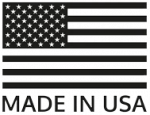In the fast-paced world of dental laboratories, precision is everything. Whether you’re crafting a zirconia crown or finishing a PMMA provisional, the choice of tools can make or break your work. Among these tools, lab burs are some of the most essential. But not all burs are created equal—and using the wrong one for a specific material can lead to frustration, poor outcomes, or even equipment damage. In this article, we’ll walk through the key types of lab burs, how they vary depending on material, and what to consider when building the perfect toolkit for your lab.
What Are Lab Burs and How Are They Classified?
Lab burs are rotary instruments designed to cut, shape, and finish dental materials in laboratory settings. Unlike clinical burs used in the chairside setting, lab burs are built for materials like zirconia, metal alloys, acrylic (PMMA), and composite resins.
Lab burs can be classified by:
- Material of the bur itself (carbide, diamond, tungsten, etc.)
- Shape (round, flame, wheel, tapered, etc.)
- Grit level (coarse for rough shaping, fine for finishing)
- Speed compatibility (high-speed vs. low-speed handpieces)
- Intended material they are optimized to work on
Each classification has a direct impact on how the bur performs on specific materials, which is why choosing the right type is essential.
Choosing Lab Burs by Material
Different materials require different bur designs, abrasives, and grit levels to achieve optimal results. Let’s break down the most common pairings.
1) Zirconia Burs
Zirconia is extremely hard and abrasive-resistant. To effectively cut or polish zirconia:
- Use diamond-coated burs specifically labeled for zirconia.
- Choose coarse grit for shaping and fine grit for polishing.
- Avoid using standard carbide burs—they’ll wear out quickly or damage the restoration.
Studies (e.g., PubMed) show that using incorrect burs on zirconia can lead to microcracks or fractures.
2) Metal Burs
For metal alloys like cobalt-chrome or titanium:
- Opt for carbide burs with aggressive cutting geometry.
- Flame or inverted cone shapes work well for undercuts or removing metal sprues.
- Regular lubrication/coolant is essential to avoid overheating.
According to ADA recommendations, excessive heat during grinding can affect metal integrity and cause warping or weakening (ADA).
3) PMMA Burs
PMMA (acrylic) is much softer than zirconia or metal:
- Use dedicated PMMA burs made with optimized cutting edges for plastic.
- Spiral flutes help avoid clogging.
- Avoid high-speed, high-pressure grinding to prevent melting or smearing.
4) Composite Burs
For composite resin materials:
- Use burs with medium to fine grit to reduce chipping.
- Choose diamond or carbide depending on the hardness of the resin.
Each bur type is fine-tuned to prevent over-grinding or surface irregularities in composites.
Shape and Grit: Roughing vs. Finishing
Besides matching a bur to the material, selecting the right shape and grit is essential for workflow efficiency and precision.
| Purpose | Common Shapes | Recommended Grit |
| Rough shaping | Cylinder, wheel | Coarse (blue/black) |
| Fine finishing | Flame, round, point | Fine or superfine (red/yellow) |
Keep in mind:
- Coarse burs save time but leave a rougher surface.
- Fine burs smooth the material but take longer.
- Using a full bur sequence (coarse to fine) yields the best results.
Durability and Cooling: Don’t Overlook These
Choosing high-quality burs is not just about performance—it’s about longevity and safety.
- Durability: Look for lab burs made with durable materials and coatings. Cheap burs tend to dull quickly or break.
- Cooling: Many materials, especially zirconia and metal, require coolant to avoid thermal damage. Overheating can degrade the structure of the material and reduce its lifespan.
- Vibration reduction: Balanced burs reduce hand fatigue and minimize risk to restorations.
When in doubt, consult manufacturer data sheets or lab performance guides to make informed choices.
Building the Right Kit for Your Lab
Creating a well-equipped toolkit is essential for a smooth and efficient dental laboratory workflow. When you have the right lab burs for each task, you can move through cases faster, reduce errors, and ensure high-quality results. Your kit should include diamond burs for zirconia (in multiple grits), carbide burs for metalwork, specialized acrylic burs for PMMA, and finishing burs for composite materials. It’s also helpful to have polishing discs or wheels, depending on your finishing protocol.
Instead of buying burs ad hoc, it’s wise to organize your toolkit in a modular way—based on either material type or stage of the workflow (roughing, finishing, polishing). This structured approach reduces confusion, speeds up technician training, and ensures consistency in restoration quality. Keeping backup burs on hand is also key to avoiding downtime during urgent or last-minute cases.
Bulk Supplies and Lab Support by Bio-Dent
Looking for a trusted source to stock your lab? Bio-Dent offers a wide range of lab burs for all major materials, including:
- Custom kits for zirconia, PMMA, metal, and composites
- Fast shipping and bulk discounts
- Full compatibility data for lab equipment
- Technical support to help match the right burs to your case needs
Our catalog includes both essential tools and specialty items, making it easier for labs of all sizes to stay fully equipped. Bio-Dent also offers inventory management tips to help you avoid stockouts and keep your workflow uninterrupted.
Choosing the right lab burs for each material isn’t just a technical decision—it’s a critical step toward high-quality restorations, efficiency, and patient satisfaction. By understanding which burs pair best with zirconia, PMMA, metal, or composite, and by investing in high-performance tools, your lab can operate smoothly and deliver better results.
Need help selecting the right bur kit for your team? Contact Bio-Dent today for expert support and lab-ready solutions tailored to your needs.

